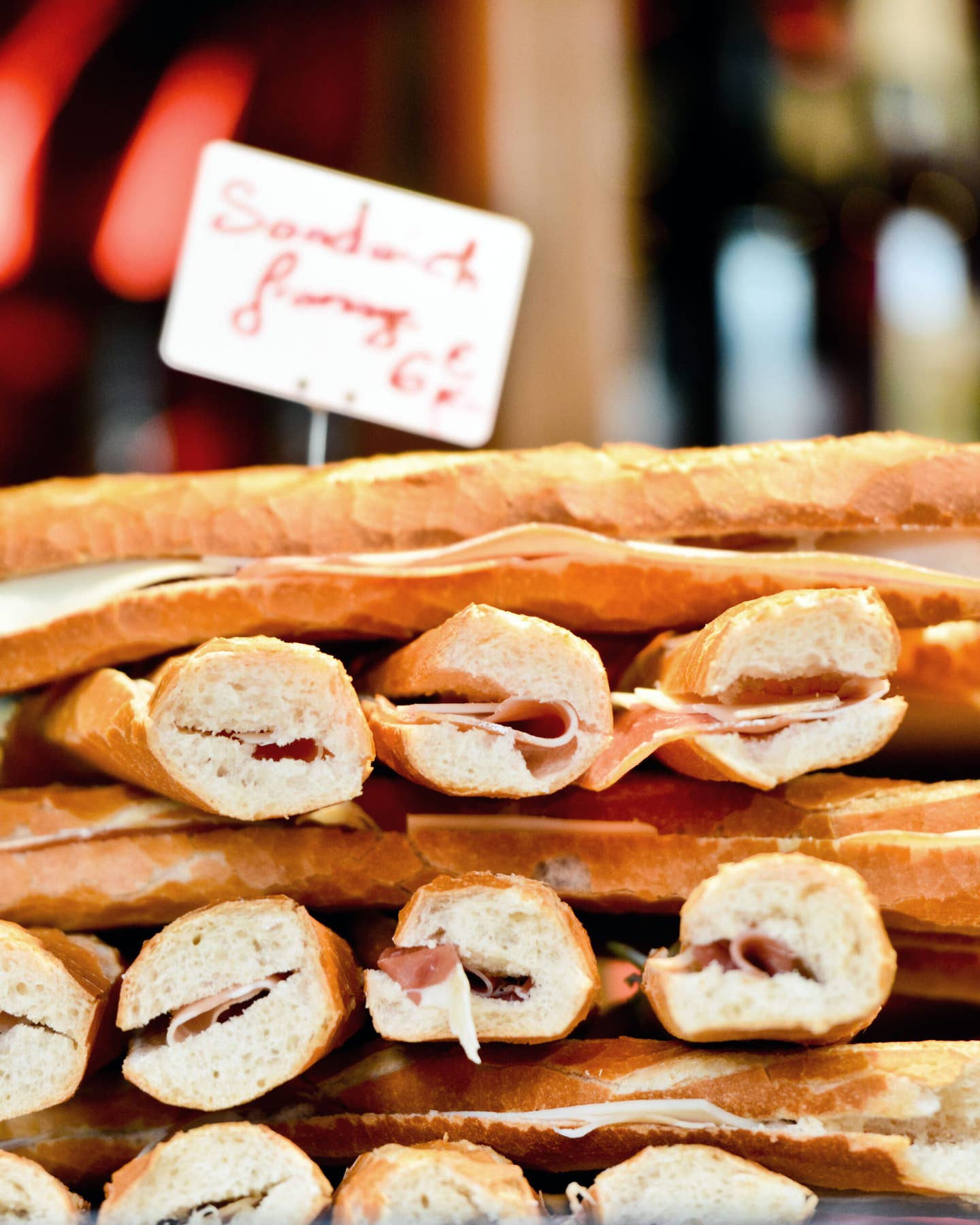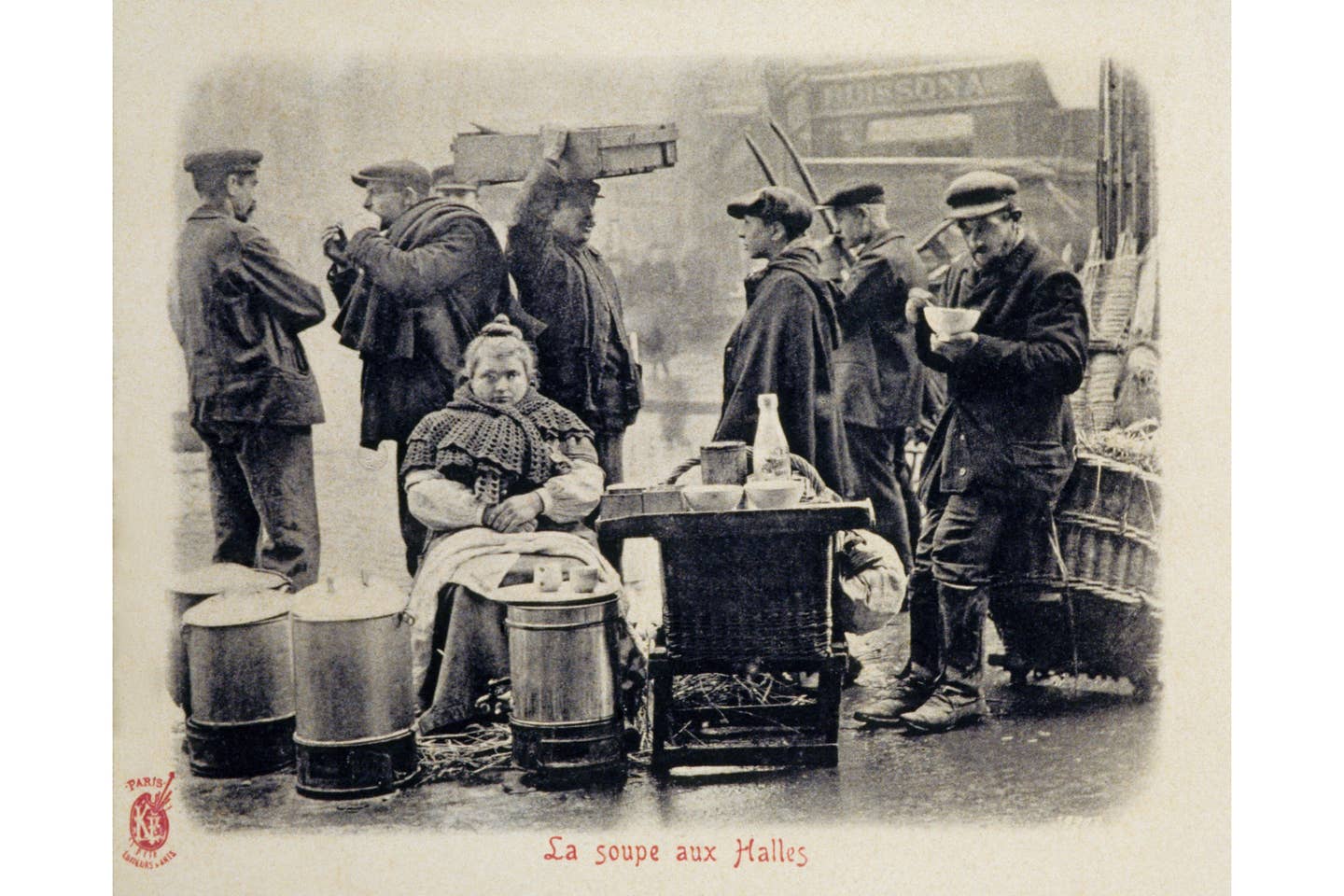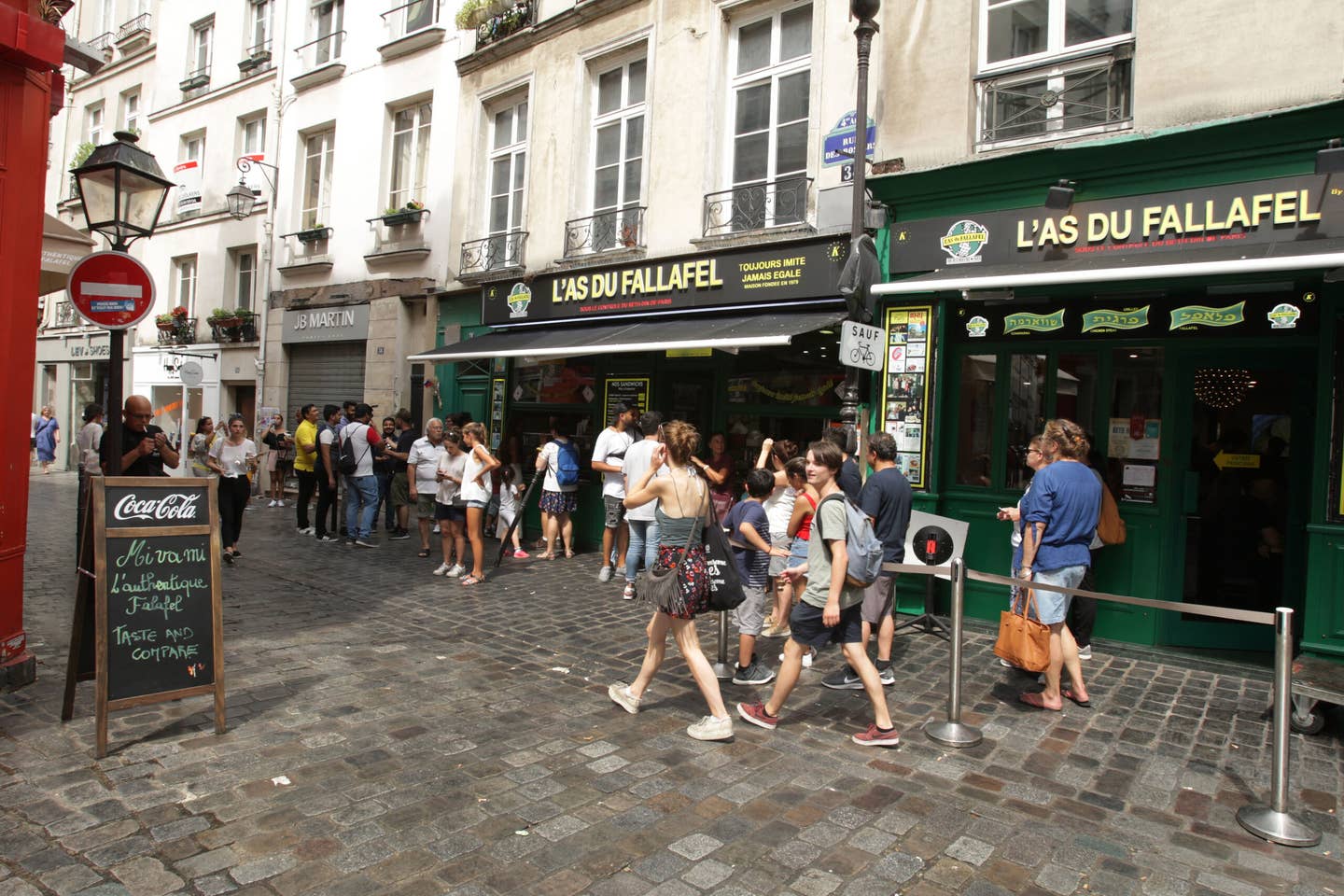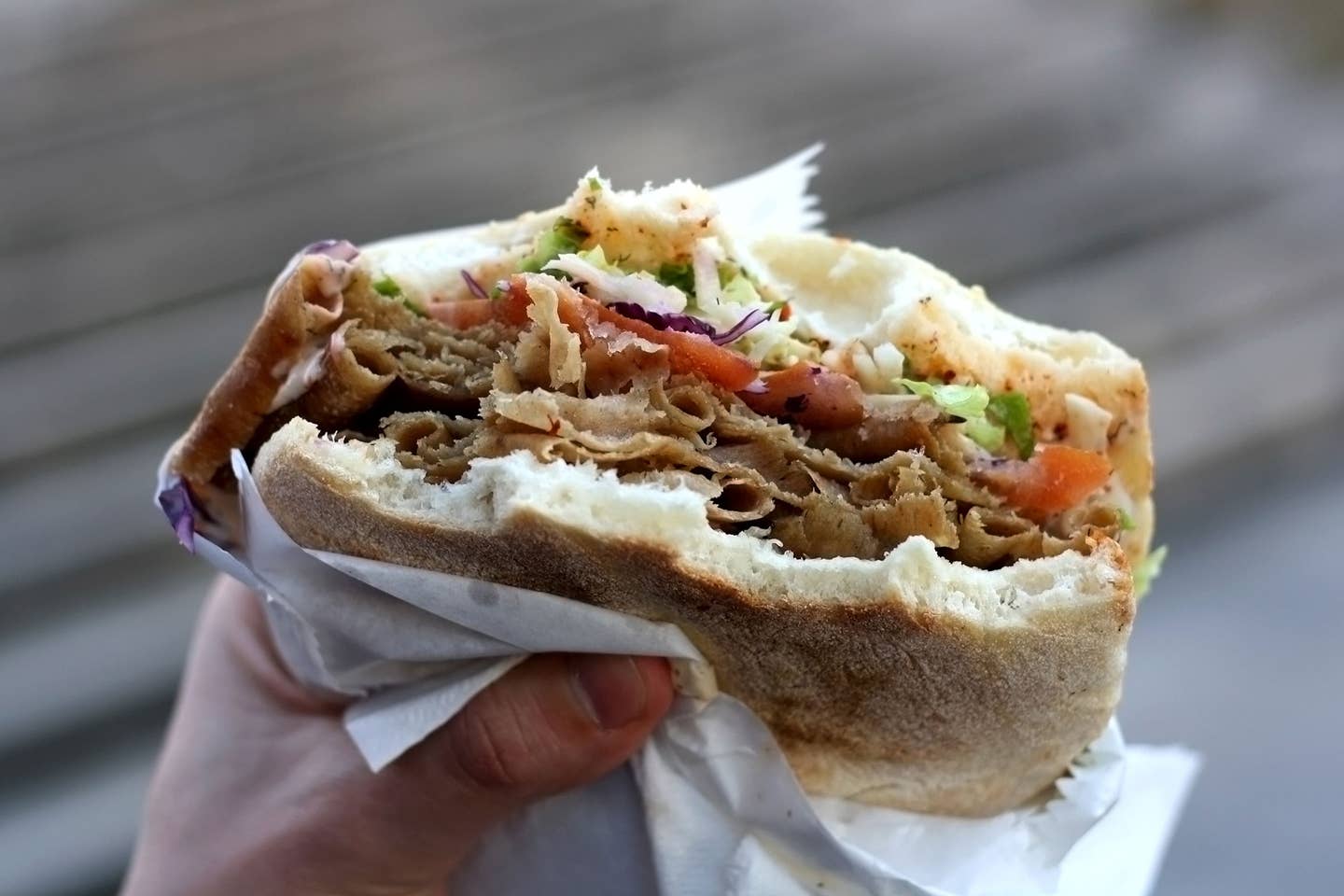
This Food Trend Sweeping Paris Makes Absolutely No Sense
When will Parisians stop trying to make ‘la street food’ happen?
Parisian food seems synonymous with perfection. We worship the peerlessly flaky croissants for breakfast, the sublime jambon-beurre sandwiches for lunch. But as a local, let me tell you: Paris has a culinary achilles heel that nobody’s talking about: la street food.
Look, I fall for TikTok food trends as readily as the next person with a phone and a thumb, but when it became easier to find a cheeseburger than beef bourguignon in Paris, I started to worry. Not about foreign foods arriving on the scene—that’s been happening for centuries: potatoes in the 1700s, Viennese kipferl (the croissant’s predecessor) in the 1800s. The alarm bells were less about what Parisians were eating and more about how they were eating it.
I’ve been living in France for 17 years—plenty of time to commit my fair share of cultural faux pas. One of the most memorable was eating a chicken sandwich on my way to Journalism 101, only to be stopped by a man wishing me “Bon appétit.” From his tone, it was clear he hoped my appetite was anything but bon. Eating on the go, I realized, was about as socially acceptable as sticking boogers to a banister. It ran counter to France’s rigid meal structure, which is so entrenched it's protected by UNESCO in 2010. But, as French culinary journalist Emmanuel Rubin once told me, you don’t protect things that aren’t endangered—and as I witnessed the grand opening of yet another grilled cheese sandwich bar on my street, I couldn't help wondering, was the arrival of street food in Paris a harbinger of the dissolution of this French tradition, a threat to the French way of life?
“La France s’attable,” Rubin said, when I asked him this very question. France “sits at table.” He lingered over that verb, “s’attabler,” aptly impossible to render in English without resorting to periphrasis. “In New York, a hot dog inhaled on the street is part of the mythology,” he continued. “In France, that famous jambon-beurre, you eat it at the counter. Or you sit down for ten minutes.”

France's "great dishes," he said, citing peasant stews and bourgeois blanquettes, were always cooked (and eaten) indoors, whether in castles or farms or cramped city dwellings. “France is a country that lives indoors, that eats indoors," he said. "Why? How? For that, you have to ask a historian.”
So I did. Patrick Rambourg is the author of the recently published Histoire du Paris gastronomique. He said that while street food has historical precedent in Paris—there were meat pies baked in mobile ovens in the Middle Ages and “pommes Pont-Neuf” sold on the eponymous bridge in the 17th century—these scant offerings disappeared with the rise of the restaurant in the 1800s.
A concurrent preoccupation with hygiene—inspired, perhaps, by the food-ambivalent, cleanliness-obsessed Napoleon Bonaparte, who regularly forgot to feed his guests—may have been the nail in Paris street food’s coffin. Many are unaware that France’s infamous lunch hour(s) isn’t an ancient ritual but rather a 19th-century invention created to air out cramped factories and keep tuberculosis at bay.
Today, it’s not just antisocial to eat at your desk in Paris; it’s actually illegal.
The perceived vulgarity of public eating in Paris may explain the side-eye I got for eating my chicken sandwich on the go, according to culinary journalist and university lecturer Domenico Biscardi. A native of Rome—where I recently counted ten men dressed in impeccable suits lapping up gelato while they strolled—Biscardi has been fascinated by these cultural mores since moving to Paris 20 years ago. He observes that when a French person is forced by circumstance to eat in public, they often “protect themselves” by retreating into a corner. Some even apologize to passersby out of shame. (If only Parisian men were so bashful about public urination.)
However we got here, the fact remains: Parisians of all social strata have shunned eating on the go for centuries. Even those lower on the totem pole had a better option in the bouillon. Paris tour guide and gastronomic educator Allison Zinder is an expert on the subject. She told me bouillons got their start in 1854 with one industrious butcher selling a simple broth; by 1900, there were 250 bouillons in Paris serving everything from egg-mayo and escargots to veal’s head and vol au vent. If Paris already had a deep-rooted proletarian cuisine, what did it need to import la street food for?

The answer may lie in the anglicism, according to Rubin. “We don’t say ‘cuisine de rue,’” he said, adding that globalization in the 1990s gave way to a certain Brooklynization of food trends in France that glamorized pizza and burgers. Much as Americans are wont to "reinterpret" (cough, bastardize) French dishes beyond recognition, so too would many of Paris’s bagels make New Yorkers (including yours truly) balk.
Today, street food in Paris has a decidedly foreign accent. Le Bonbon's recent list of the city’s best dishes calls out poutine, empanadas, fried chicken, and lobster rolls—even if the versions on offer are as divorced from their origins as the bagelwich is from historical Jewish delis. While I’m certainly the last person to tell anyone what “authentic” Vietnamese, Mexican, or even French fare should look like, it’s hard to not conclude that Parisian street food is more about Instagrammability than actual nourishment—all cheese-pull and no flavor.
“It’s like a speculation bubble,” Biscardi said of this new, concept-driven food scene, referring to entrepreneurs who “see possibilities, but who aren’t necessarily focused on longevity, construction, quality.”
The same capitalism-driven disingenuousness applies to street food with French trappings as well, as Lauren Collins famously explained in a New Yorker essay on the absurdity of the “French taco” (a flour tortilla stuffed with ground beef and reblochon cheese). Me, I recently came across beef bourguignon ladled into a baguette—perhaps the least effective, and messiest, vehicle for serving the stew imaginable. It all feels AI-generated, linked to no particular tradition except the gaping maw of social media’s appetite for novelty. If Paris really cared about authentic cuisine de rue, where’s the renaissance of those meat pies and pommes Pont-Neuf?
But there are exceptions: Parisian street food isn't soulless across the board. L’As du Fallafel has been bringing falafel sandwiches to the masses since 1979. In Paris’s oldest covered market, Chez Alain Miam Miam has been stuffing Breton buckwheat crêpes with organic veggies, AOP cheeses, and top-quality charcuterie since 2005. In 2021, Nonette began slinging phenomenal bành mí filled with everything from crispy pork belly to sardines.
And we haven’t even gotten to the kébab, that Turkish import of the 1980s consisting of slow-roasted meat shaved from a spit and stuffed into bread, all for well under 10 bucks (fries included). The dish—enjoyed across all generations and wealth brackets—is so ingrained in Parisian culture that it’s referenced in raps by Booba and La Fouine. “If there’s a French street food, that’s it,” said Rubin.

But tellingly, in Paris, even the highly portable kébab is eaten sitting down.
Changes are afoot everywhere in France's food culture. Lunch breaks have dropped from an average of 1 hour and 38 minutes in 1975 to 38 minutes in 2019. Former president Nicolas Sarkozy famously eliminated the cheese course from state lunches in 2012 to save time. But some things will probably never change: Café terraces still fill up at noon on the dot, and street food, at least for now, is eaten sitting down.
The French meal “may be less structured than before, but there’s still a structure,” Rambourg said. Who knows how long the street food trend will stick around, but one thing’s certain: I’m going to stop having a cow about it. After all, it’s lunchtime, and I need to find somewhere to sit.
Keep Reading
Continue to Next Story










